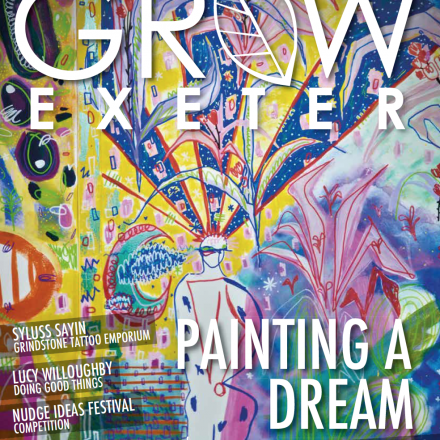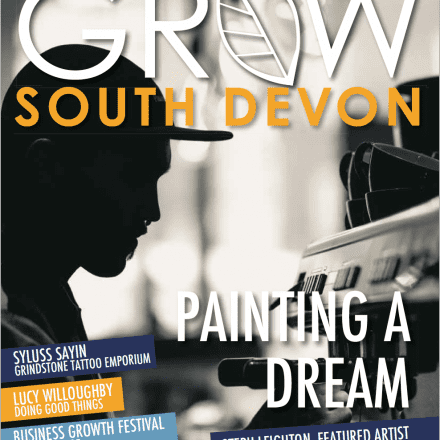
Places Of Poetry Project Provides Map For Inspiration
Grow Talk by Sofy Robertson
William Wordsworth, John Keats, Dylan Thomas; it is surprisingly easy to name those who have been moved to put pen to paper by the places they have lived or visited. With this in mind, the Places of Poetry project is extending an open invitation for you to follow in their footsteps and share the places you love through poetic verse and rhyming couplets, starting today.
The project itself was inspired by the great epic poem of English and Welsh national description, Michael Drayton’s Poly-Obion (1612-22). The epic, which spans a whopping 15,000 lines, was published with unique maps by the engraver William Hole and uses places and natural features of the land as points of entry into historical narratives.
In Drayton’s style, but truly encompassing the digital age in which we live, the Places of Poetry project has created a digital map of England and Wales to provide the inspiration for thousands of new poems to celebrate the diversity and history of the countries. Breathe easy fellow writers, 15,000 line epics are not a prerequisite for taking part in the project.
The Places of Poetry map consists of two layers: an artistic map, based on decorative seventeenth-century county maps, and a second layer of Ordnance Survey data, allowing users to zoom in to a high level of detail. Writers of all ages and backgrounds will be able to ‘pin’ their poems to specific locations on the map; from historical locations, towns and landmarks to street corners and places of personal significance.
In addition to amateur writers, some of the country’s most innovative and well-known poets will be supporting the event through a series of public events this summer, as well as pinning their own poems to the digital map.
The Places of Poetry project is led by the poet and Radio 4 regular Paul Farley of Lancaster University and the academic Professor Andrew McRae at the University of Exeter. The project has been made possible through funding from the Arts and Humanities Research Council, The National Lottery Heritage Fund and Arts Council England, as well as partnerships with the Ordnance Survey, The Poetry Society and National Poetry Day.
Professor McRae said:
“We hope the map will inspire people to write, whatever their age or experience, and fill the map with thousands of new poems about places that mean something to them.
“The aim is to encourage people to think about heritage from different angles, such as environmental, industrial, religious, cultural or sporting. We want to celebrate the diversity, history and character of the places around us.”
The Arts Council’s Director of Literature, Sarah Crown said:
“I’m delighted that Arts Council England is supporting this exciting and innovative new platform. Poetry has always played a critical role in connecting us to the places we love, and in which we live our lives; I hope this will encourages people everywhere both to immerse themselves in our country’s poetic heritage, and to share their personal connections with it.”
Both Professor Farley and Professor McRae have spent years working with the poem that inspired the project, Poly-Olbion. Now, they want to use crowd-sourcing to generate multiple poetic perspectives on the significance of places 400 years after Drayton composed his poem. Professor McRae explained:
“Poetry has been used across the centuries to reflect on places and their histories. We’re using modern technology to reinvigorate this model, and we hope that as many people as possible get involved. We are excited to see where people pin their poems, and what they say about the places that matter to them.”
The Places of Poetry project will be promoted through a programme of events at heritage sites this summer, each supported by a poet-in-residence. Locations will be:
- Avebury (National Trust)
- Stonehenge (English Heritage)
- Ely Cathedral
- Caernarvon Castle
- The Roman Baths
- River Severn
- Big Pit National Coal Museum
- Peak District National Park (National Trust)
- Hadrian’s Wall Housesteads Fort (National Trust)
- Byker Community Trust
- Wordsworth Trust (Dove Cottage)
- Sherwood Forest
- The Kia Oval
Poets in residence are: Will Harris, Jo Bell, Sean O’Brien, Jen Hadfield, Sarah Howe, Zaffar Kunnial, Gillian Clarke, Neil Rollinson, Isabel Galleymore, Kayo Chingonyi, Daljit Nagra, and Jack Underwood.
How can I get involved in the Places of Poetry project?
The fantastic thing about this project is that anyone can take part, no matter your age, background or poetic experience. From individuals to poetry groups to school classes, the project is open to all.
Downloadable materials are available on the project website to enable individuals and organisations to become involved, creating their own activities and approaches to writing poems of place and heritage. As the materials have been developed in association with The Poetry Society, the toolkits have been adapted for writers of different ages and levels of experience, heritage sites, arts organisations and schools.
The Places of Poetry website goes live today (31st May) and will run until 4th October, spanning two of our country’s most beautiful seasons for poetic inspiration.
So without further ado, it’s time to put pen to paper or fingertips to your keyboard (for all you writers from the digi age) and share the places you love through verse.
Watch this space; Grow Talk will be featuring some of our favourites as the project gets going.
Photos by Álvaro Serrano , Inja Pavlić on Unsplash










HOW ON EARTH DO I POST A POEM????????
https://www.placesofpoetry.org.uk/